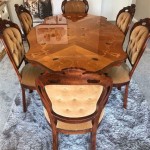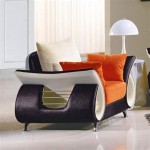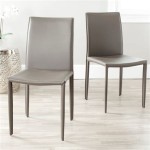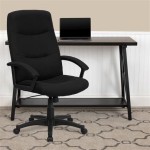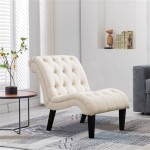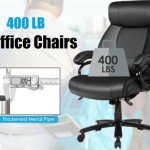Chairs for 36-Inch Counters: A Comprehensive Guide
Selecting appropriate seating for a 36-inch counter, often found in kitchens, bars, and elevated dining spaces, necessitates careful consideration of height, style, comfort, and durability. The ideal chair should provide comfortable seating while maintaining ergonomic posture and complementing the aesthetic of the surrounding environment. A counter height of 36 inches typically requires a chair with a seat height of approximately 24 to 26 inches. This allows for sufficient legroom and a comfortable reach to the counter surface.
This article will explore the critical factors involved in choosing suitable chairs for 36-inch counters, providing a comprehensive guide to help individuals and businesses make informed decisions. We will delve into measurement considerations, style options, material choices, and comfort features, equipping readers with the knowledge necessary to select chairs that are both functional and aesthetically pleasing.
Understanding Counter Height and Chair Height Relationships
The correlation between counter height and chair height is paramount for achieving comfortable and practical seating. A general rule of thumb is to maintain a 10 to 12-inch gap between the seat of the chair and the underside of the counter. This spacing allows for adequate legroom and prevents the user from feeling cramped or restricted. A counter measuring 36 inches in height, therefore, ideally requires a chair with a seat height ranging from 24 to 26 inches.
However, individual preferences and physical characteristics should also be taken into account. Taller individuals may benefit from a seat height closer to 26 inches, while shorter individuals may find a 24-inch seat more comfortable. It is advisable to test different chair heights, if possible, before making a purchase. Furthermore, the thickness of the countertop's overhang should be considered, as a thicker overhang may reduce the available legroom and necessitate a different chair height.
Adjustable-height chairs offer a versatile solution for accommodating individuals of varying heights and counter configurations. These chairs typically feature a gas lift mechanism that allows the user to adjust the seat height within a specified range. This adaptability makes them a popular choice for households or commercial settings where multiple users share the seating.
Beyond simple height considerations, the inclusion of footrests on chairs designed for 36-inch counters is a critical element of comfort. Footrests provide support for the feet and ankles, reducing strain on the legs and lower back, particularly during extended periods of sitting. The height of the footrest should be appropriately positioned to allow for a relaxed and natural foot placement.
Exploring Style and Design Options
Chairs for 36-inch counters are available in a wide array of styles and designs, ranging from classic and traditional to modern and contemporary. The choice of style should complement the overall aesthetic of the space and reflect the individual's personal preferences. Common style options include stools, chairs with backrests, armchairs, and backless designs.
Stools are a popular choice for counter seating due to their compact size and versatility. They are particularly well-suited for spaces with limited floor area. Stools can be either fixed height or adjustable, and they may or may not include a backrest. Backless stools offer a minimalist aesthetic and are easy to tuck away when not in use, while stools with backrests provide additional support and comfort.
Chairs with backrests offer enhanced comfort and support compared to stools. The backrest can be either a full back, extending to the upper back and shoulders, or a low back, providing lumbar support. Some chairs also feature armrests, which can further enhance comfort and reduce strain on the arms and shoulders. Armrests can be particularly beneficial for individuals who spend extended periods sitting at the counter.
The choice of material also plays a significant role in the overall style and design of the chair. Common materials include wood, metal, plastic, and upholstery. Wood chairs offer a warm and natural aesthetic, while metal chairs provide a sleek and modern look. Plastic chairs are durable and easy to clean, making them a practical choice for high-traffic areas. Upholstered chairs offer enhanced comfort and can be customized with a variety of fabrics and colors.
Consider the existing decor of the space when selecting chair styles and materials. If the space features a traditional design, wood chairs with classic lines may be a suitable choice. For a modern space, metal chairs with a minimalist aesthetic may be more appropriate. It is also important to consider the color palette of the space and select chairs that complement the existing colors.
Material Considerations for Durability and Maintenance
The choice of chair material significantly impacts its durability, ease of maintenance, and overall lifespan. The environment in which the chairs will be used, the frequency of use, and the potential for spills or accidents should all be considered when selecting materials. Some materials are more resistant to wear and tear than others, and some require more maintenance to keep them looking their best.
Wood chairs offer a classic and timeless aesthetic, but they can be susceptible to scratches, dents, and water damage. Hardwoods, such as oak, maple, and cherry, are more durable than softwoods, such as pine. Wood chairs should be regularly cleaned with a damp cloth and polished to maintain their finish. Avoid using harsh chemicals or abrasive cleaners, as these can damage the wood.
Metal chairs are known for their durability and strength. They are resistant to scratches, dents, and water damage, making them a practical choice for high-traffic areas. Metal chairs can be made from a variety of metals, including steel, aluminum, and iron. Steel chairs are particularly strong and durable, while aluminum chairs are lightweight and rust-resistant. Metal chairs should be cleaned with a damp cloth and mild soap. Avoid using abrasive cleaners, as these can scratch the finish.
Plastic chairs are a budget-friendly and easy-to-maintain option. They are resistant to water damage and can be easily cleaned with soap and water. Plastic chairs are available in a variety of colors and styles, making them a versatile choice for a variety of environments. However, plastic chairs may not be as durable as wood or metal chairs and can be susceptible to scratches and fading.
Upholstered chairs offer enhanced comfort and can be customized with a variety of fabrics. However, upholstery can be more difficult to clean and maintain than other materials. The choice of fabric should be based on its durability, stain resistance, and ease of cleaning. Leather is a durable and stain-resistant option, but it can be more expensive than other fabrics. Microfiber is a soft and comfortable option that is also stain-resistant. Upholstered chairs should be regularly vacuumed to remove dust and debris. Spills should be cleaned immediately with a damp cloth and mild soap.
The material should also be appropriate for the intended use. For example, if the chairs will be used in a restaurant or bar, they should be made from durable and easy-to-clean materials. If the chairs will be used in a home, comfort and style may be more important considerations.
Comfort Features and Ergonomic Considerations
Comfort is a paramount consideration when selecting chairs for 36-inch counters, particularly if users will be spending extended periods sitting. Factors such as seat cushioning, backrest support, and footrest placement all contribute to overall comfort and ergonomic well-being. A well-designed chair should promote good posture and reduce strain on the back, neck, and legs.
Seat cushioning is essential for providing comfort and reducing pressure on the sit bones. The type and thickness of the cushioning should be appropriate for the intended use of the chair. For example, chairs used in a restaurant or bar may require thicker cushioning than chairs used in a home. Common seat cushioning materials include foam, memory foam, and gel. Memory foam conforms to the body's shape, providing customized support. Gel cushioning provides excellent pressure relief and is particularly beneficial for individuals who spend extended periods sitting.
Backrest support is crucial for maintaining good posture and reducing strain on the back. The backrest should provide adequate lumbar support, which is the area of the lower back. Some chairs feature adjustable lumbar support, allowing the user to customize the level of support. The height and angle of the backrest should also be adjustable to accommodate individuals of varying heights and body types.
Footrests provide support for the feet and ankles, reducing strain on the legs and lower back. The height of the footrest should be appropriately positioned to allow for a relaxed and natural foot placement. Some chairs feature adjustable footrests, allowing the user to customize the height. Footrests are particularly important for taller individuals who may not be able to comfortably reach the floor when sitting in a chair designed for a 36-inch counter.
Ergonomic design principles should be considered when selecting chairs for 36-inch counters. Ergonomic chairs are designed to promote good posture and reduce strain on the body. They typically feature adjustable seat height, backrest angle, and lumbar support. Ergonomic chairs can be particularly beneficial for individuals who spend extended periods sitting at the counter.
When possible, test the chairs before making a purchase to ensure they provide adequate comfort and support. Sit in the chair for an extended period and pay attention to how your body feels. If you experience any discomfort or pain, the chair may not be the right choice for you. Consider consulting with an ergonomics specialist to determine the best chair for your specific needs.

Jennings 36 Inch Round Counter Dining Set W Swivel Stools

27 36 Inch Velvet Bar Stools Counter Height Adjustable Swivel Barstools High Chairs With Golden Metal Base Chair Tufted Back Ring

How To Pick The Right Stool Height And Quantity For Your Space Today S Design House

Velvet Counter Height Bar Stools Set Of 2 360 Degree Swivel With Gold Nailhead Trim And Tufted Back 36 Inch Chairs For Kitchen Island Cafe Pub Orange Walmart Com

A Guide To Barstools And Counter Stools Ideas Advice Lamps Plus

How To Choose The Right Counter Chairs For Your Kitchen

Carriage House 36 Inch Counter Dining Set W Cushion Barstools

A Guide To Barstools And Counter Stools Ideas Advice Lamps Plus

Freda Square 36 Inch Counter Height Dining Table Cappuccino

How To Pick The Perfect Bar Stool Height A Guide Barstool Comforts

